Uncover Bordeaux's vibrant flavors and culinary gems with our expert guides. Plan an unforgettable trip now!
Read more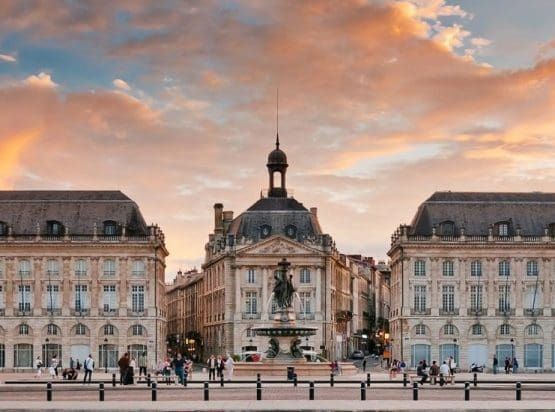
EXPLORE ALL OUR BORDEAUX WINE REGIONS GUIDE
Last updated: April 4, 2025
The ancient and beautiful region of Saint-Emilion has beguiled the palates of wine lovers for centuries. Indeed, for those who claim that Medoc wines require too much time and effort, we give you the rich, approachable, and moreish wines of Saint-Emilion. The critical mass of red wines (whites are very rare) are utterly irresistible, only enhanced by a suitably decadent food pairing.
Meanwhile, the town itself is a UNESCO World Heritage site, bursting with excellent restaurants, luxury hotels and a surfeit of history. It is chic and yet very welcoming. It is also a beacon of democracy and fairness in a region dedicated to intransigent hierarchies; the framework for classifying Saint-Emilion’s top wine estates is updated every decade. In this corner of the Dordogne, magic awaits.
Discover More About French Wine
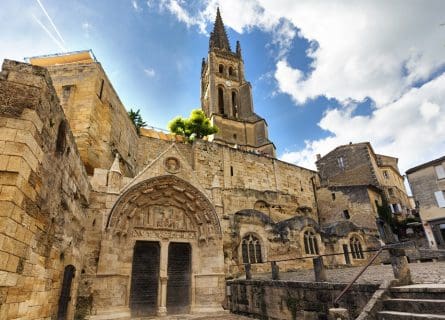
Saint-Emilion’s history is as deep and complex as its Grands Crus Classés. Like many French vineyards, the area traces its viticultural history back to Roman times, when it was home to the famous administrator Decimus Ausonius. Born in Bordeaux in the early 4th century, Ausonius died in the region in AD 395, although his name lives on in Château Ausone, one of Saint-Emilion’s most venerated estates.
However, the town is named after Aemilianus, the head of a religious order that survived the disintegration of the Western Roman Empire in AD 476. During the aftermath (referred to by historians as the ‘Dark Ages), Saint-Emilion prospered as a religious center after an order of Benedictine monks founded monasteries and other ecclesiastical institutions.
By the late 12th century, Saint-Emilion had been granted an independence charter as winegrowing had become vital to the area’s economy in the Middle Ages. This former backwater was in the ascendant.
Challenges and Triumphs Through the Ages
Yet the famous union between Henry II of England and Eleanor of Aquitaine in 1152 did not elevate all sections of Bordeaux society. Merchants focused their commercial activities on the surrounding vineyards of Graves, bestowing favorable terms to Left Bank properties and marginalizing producers on the Right Bank. However, the creation of the port of Libourne in the 13th century turned things around, as wineries could establish their own business relationships with buyers in northern Europe.
Unfortunately, the Hundred Years War between France and England damaged trade significantly in the late Middle Ages; Saint-Emilion once again became a provincial backwater, ignored and forgotten in equal measure.
The Renaissance of Right Bank Vineyards
However, prosperity returned to the vineyards of the Right Bank in the 1700s, as trade between France and northern Europe flourished. A hundred years later, the area under vine had tripled; the most famous estates, such as Cheval Blanc and Ausone, had established a strong reputation for their velvety, seductive red wines.
The only fly in the ointment was Bordeaux’s powerful negociant (merchant houses), who continued to regard Saint-Emilion as an unworthy backwater. The final insult came in 1855: no merchant would countenance the inclusion of any Right Bank chateaux in Bordeaux’s seminal classification.
Path to Appellation Status
As a result, Saint-Emilion became the first region in France to create a ‘Syndicat Viticole’ in 1884, set up to protect and regulate its interests. Awarded appellation status in 1936, Saint-Emilion has continued to play by its own rules – a hangover from this wonderful region’s historic (and pernicious) marginalization.
In 1955, the appellation unveiled Bordeaux’s first stab at ‘vinous democracy’: a classification of estates judged by an independent panel of experts that would be updated every decade. It is a four-tier hierarchy – Premier Grands Crus Classés A, Premier Grands Crus Classés B, Grands Crus Classés, and Grand Cru – that has stood the test of time.
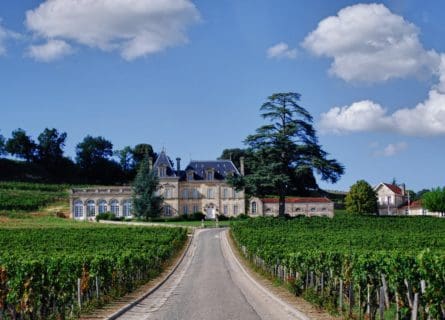
The handsome town of Saint-Emilion is located in the corner of an escarpment above the Dordogne. Behind it, on the sand and gravel plateau, vines flow steadily into Pomerol in the west. They swoop down steep limestone slopes (the Cotes) into the plain. To the north, meanwhile, is the Barbanne stream and the neighboring appellations of St-Georges and Montagne-Saint-Emilion – ‘satellite’ appellations that increasingly make excellent value wine.
The climate is quintessential Right Bank Bordeaux: a marriage of continental and maritime influences characterized by warm-to-hot summers and damp springs. The average rainfall is approximately 800 millimeters, although the recent trend has been for very dry summers.
The Diverse Soils of Saint-Emilion
But Saint-Emilion is very much defined by its soils: there are three key subzones within the appellation, each boasting a unique set of conditions that influence the final wine style. A privileged club of châteaux, including Figeac and Cheval Blanc, lie on the border of Pomerol, on the western edge of the appellation’s sandy and gravelly plateau. This terroir’s best wines are utterly splendid, beautifully balanced, and last almost as long as the First Growths of Pauillac. Cabernet Franc thrives here, producing very perfumed and elegant wines.
A Unique Terroir for Merlot
The other key winegrowing area is known as the Cotes Saint-Emilion, which occupies the escarpment around and to the east of the town. This calcareous soil is perfect for growing Merlot to perfection, although the wines are not as fruity as the plateau’s. Yet, they are some of Bordeaux’s most perfumed and generous wines at their best. They are typically more alcoholic than the Medoc wines, with a plumper structure and riper fruit.
Finally, Chateau Pavie, Larcis-Ducasse, and others make their home on the slopes that extend southwest towards the Dordogne River. The terroir is very heterogeneous: vineyards are cultivated on varying proportions of limestone, clay, and sandy terrain, producing medium-bodied reds that occasionally lack the finesse of the Cotes.
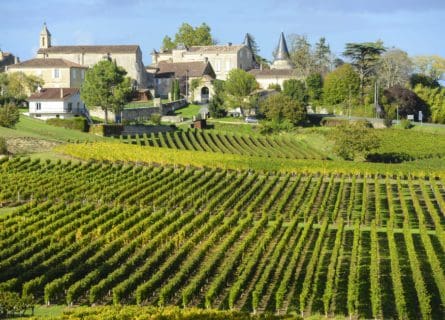
At the heart of every bottle of Saint-Emilion is a beguiling marriage of fruit, structure, freshness, and depth. Granted, the wines here take less time to reach perfection than Medoc reds, but that only adds to their appeal. The quintessential Saint-Emilion has ripe tannins, a solid tastiness, and bags of sweet and savory fruit. They are among the most popular red wines in the world.
Key to Success
But what is the secret to Saint-Emilion’s success? Much depends on the fruit quality: the plump Merlot and elegant Cabernet Franc dominate in these vineyards. This is largely because the noble red grape of the Medoc, Cabernet Sauvignon, can have problems ripening in this climate (it is less tempered by the ocean), especially in its damper, cooler soils. Thus, Merlot has long formed the backbone of almost all Saint-Emilion reds, juxtaposed against the perfume and spice of Cabernet Franc.
Diverse Winemaking Techniques
Winemaking preferences in the appellation, of course, can vary greatly depending on the vintage and priorities of individual château. Angelus, for example, embraces a policy of rich fruit extraction, using all means at its disposal:
The resulting wine is massively concentrated and powerful, with new oak always prominent on the nose. Other properties, such as Pavie, seem to be aiming for hyper-concentration and massive alcohol – two qualities that have arguably fallen out of fashion. But, for every Chateau Pavie, there is a Figeac: an exemplar of balance and poise with harmoniously integrated wood.
Experimentation and Dynamism
Nevertheless, Saint-Emilion has long been a hotbed of experimentation and dynamism. Micro-oxygenation is employed by many châteaux (using controlled amounts of oxygen to soften tannins). At the same time, Michel Rolland’s persuasive influence is still felt in the philosophy of late-harvesting and prolonged hang times, chasing phenolic maturity at all costs. But does it lead to better wines? That is the million-dollar question.
Saint-Emilion is facing two existential challenges in the 21st century. The first concern is global warming and its impact on ripeness and alcohol levels; several winemakers in the Right Bank have admitted that it is becoming difficult to produce elegant Merlot wines in light of such hot, dry summers.
Stephanie Barousse, deputy CEO of Chateau de la Dauphine in Fronsac, told journalists in 2021,
“while I love the generosity of ripe Merlot, I am worried about rising alcohol levels.” She also said: “Over the past few vintages, we’ve been seeing wines with 15% alcohol: its tendency to ripen early can be a problem in hotter years. I don’t want my abv levels to become unbalanced, so we’re going to use more Cabernet Franc in upcoming vintages, as it ripens later.”
The second is the viability of the classification framework in its current form. The 1955 initiative was a pioneering move for Bordeaux and is to be much admired. Indeed, although this well-regulated system is not without its controversies, it has been a force for good in encouraging underperforming chateaux to up their game.
For example, every classified property in 2006 had to submit a detailed dossier justifying their re-inclusion and, if promotion was sought, the reasons for it. Chateau Angelus and Pavie are two iconic estates that have benefited from the hierarchy; they were elevated from Premier Grands Crus Classé B to Premier Grands Crus Classé A in 2012.
Yet estates have also been demoted, including Chateaux Sansonnet and Grand-Corbin-Despagne in 1996. More recently, four properties (Cadet-Bon, La Marzelle, Tour de pin de Figeac, and Gaudet) challenged their demotion in 2007, claiming that oversight of the classification was flawed and prone to bias. The presiding judge ruled in their favor, and the framework was temporarily suspended that year.
The Withdrawal of Key Producers
And yet, Saint-Emilion’s pioneering classification has survived until this day. However, its future is still uncertain as three of the appellation’s most important producers withdrew their membership in 2021 and 2022. They were Ausone, Cheval Blanc, and Angleus – responsible for marketing Saint-Emilion’s most prestigious and expensive wines. This highly politicized affair has been a major blow for the authorities, who have not, so far, been able to convince Ausone, Cheval Blanc, and Angelus to return. So why did they do it?
Part of the problem is the metric used to assess viability for inclusion, which has been expanded to include press coverage and engagement with social media. In Bordeaux, reactionary attitudes can prevail, and this new criterion was rejected by the owners of Ausone and its neighbors.
In addition, Angelus owner Hubert de Bouard became embroiled in controversy when a civil court fined him for an “illegal taking of interest” in the 2012 classification. Part of the family’s response was to withdraw Angelus from the framework, claiming it was no longer worth their time. Can the syndicate heal this rift between its star players and the council? Only time, as they say, will tell.
Cabernet Franc grape is a close relative of Merlot and Cabernet Sauvignon and is the principal blending grape used in Bordeaux.
Find out moreDiscover the irresistible allure of Cabernet Sauvignon—a worldwide favorite with robust, dark-bodied flavor. Unleash your wine journey today!
Find out moreMerlot is the most cultivated grape in Bordeaux and closely related to Cabernet Franc
Find out moreIt’s a warm summer morning, and the town is awakened to the most seductive sights and smells imaginable. Seasoned traders are the culprits, bustling in the town square to assemble a myriad of local produce for sale, including ham, freshly baked bread, wine, olives, and an array of delicious cheeses. This is Saint-Emilion during market day; few places in France do it better.
Meanwhile, eager visitors – and locals – search for their favorite restaurant, serving mouthwatering cuisine that doesn’t break the bank. Try the roast duck stuffed with foie gras for a decadent treat. The wine pairing? As if you needed to ask.
Bordeaux Gastronomy Guide: Read more

Uncover Bordeaux's vibrant flavors and culinary gems with our expert guides. Plan an unforgettable trip now!
Read more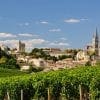
Uncover Saint Emilion's vibrant flavors and culinary gems with our expert guides. Plan an unforgettable trip now!
Read more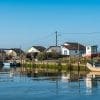
Uncover Arcachon vibrant flavors and culinary gems with our expert guides. Plan an unforgettable trip now!
Read more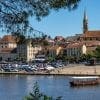
Uncover Bergerac's vibrant flavors and culinary gems with our expert guides. Plan an unforgettable trip now!
Read more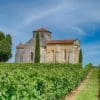
Uncover Cognac's vibrant flavors and culinary gems with our expert guides. Plan an unforgettable trip now!
Read more
Uncover Périgueux's vibrant flavors and culinary gems with our expert guides. Plan an unforgettable trip now!
Read more
Uncover Saintes's vibrant flavors and culinary gems with our expert guides. Plan an unforgettable trip now!
Read moreIf you would like us to customize an exclusive luxury tour, contact us and let us know your travel plans. We offer luxury food and wine tours for private groups of a mininium two guests. In addition, all of our private, chauffeured tours are available year-round upon request.

